Mnamon
Ancient writing systems in the Mediterranean
A critical guide to electronic resources
News
-
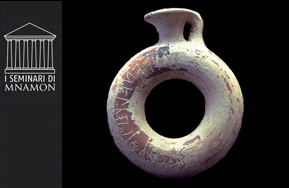 2018-09-27
2018-09-27Mnamon seminars
On October 19th starting at 11.30 a.m. in Scuola Normale Superiore, Sala Azzurra conference room, Palazzo della Carovana, the following seminar will be held:
Daniele Maras (Soprintendenza Archeologia Belle Arti e Paesaggio per l'area metropolitana di Roma, la provincia di Viterbo e l'Etruria Meridionale)
"Scritture d'Etruria: modelli alfabetici e particolarismi grafici dalle 'corti' orientalizzanti ai santuari arcaici".
Live video streaming on YouTube SNS
(A.Russo) -
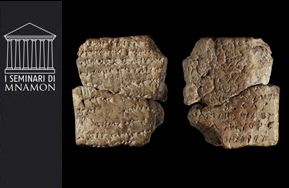 2018-05-22
2018-05-22Mnamon seminars
On June 7th starting at 11.30 a.m. in Scuola Normale Superiore, Bianchi-scienze conference room, Palazzo della Carovana, the following seminar will be held:
Salvatore Gaspa (Humboldt Senior Research Fellow Seminar für Sprachen und Kulturen des Vorderen Orients – Assyriologie Ruprecht-Karls-Universität Heidelberg)
"Le tavolette “greco-babilonesi”: problemi, interpretazioni e prospettive di ricerca".
Live video streaming on YouTube
(A.Russo) -
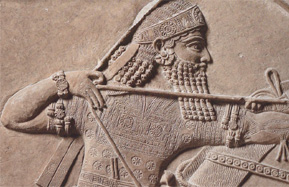 2018-05-07
2018-05-07Book
The new book by Salvatore Gaspa “Textiles in the Neo-Assyrian Empire. A Study of Terminology” (Studies in Ancient Near Eastern Records 19), Boston-Berlin: De Gruyter 2018, Pp. 443, 22 figs., 4 tables, ISBN 978-1-5015-1074-8, presents for the first time a systematic and interdisciplinary study on production and consumption of textiles in the Neo-Assyrian Empire and, more importantly, collects and discusses the lexicon of textiles (fibres, manufacturing processes, professions, tools, decorations and finished products) from the entire documentation of the Neo-Assyrian archives. The study is completed by an analysis of the administrative management of textile production and distribution by the Assyrian State and of the role played by these products in economy, palatine culture, cultic and military activities of the first empire of the ancient world. The book also includes a new edition of some administrative documents dealing with textiles kept at the British Museum. -
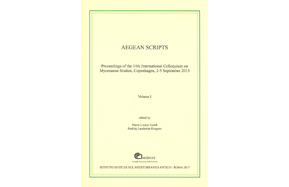 2018-03-19
2018-03-19Book
Aegean Scripts. Proceedings of the 14th International Colloquium on Mycenaean Studies, Copenhagen, 2-5 September 2015 (Incunabula Graeca CV:1-2), M.-L. Nosch, H. Landenius Enegren (edd.), 2 voll., Roma, CNR edizioni, 2017 (ISBN 978-88-8080-275-4).
The book contains the Proceedings of the 14th International Colloquium on Mycenaean Studies, held in Copenhagen from 2 to 5 September 2015. The authors of the 44 contributions are among the major specialists in Aegean and Cypriot texts of the 2nd and 1st millennia BC. The book is divided into two volumes and five sections: 1) Scripts, Palaeography and Research Tools, 2) Interpretations and Contexts, 3) Philology and Linguistics, 4) Comparative Studies between the Aegean, the Levant and the Ancient Near East, and 5) Historiography. The publication has been funded by the Lillian and Dan Fink Foundation, the Carlsberg Foundation, the Danish National Research Foundation, the Institute for Aegean Prehistory, the R. K. Rasks Legat Foundation and the University of Copenhagen. The book, edited by M.-L. Nosch and H. Landenius Enegren, has been published by the Institute for the Study on Ancient Mediterranean of the Italian National Research Council in the Incunabula Graeca series, directed by M. Bettelli e M. Del Freo. -
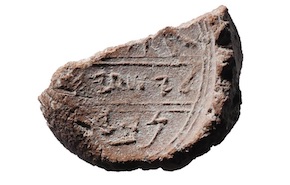 2018-03-14
2018-03-14Isaiah’s seal impression from Ophel excavation
A fragment of a seal impression that bears the name of Isaiah was discovered during the 2009 season of the Ophel excavations in Jerusalem (cfr. Biblical Archaeology Review, March-May 2018). This seal impression (Bulla B12) is divided into three registers: the first register is almost completely missing, in the middle register the name lyš‘yh[w] «(belonging) to Isaiah» is impressed, and in the third register we find the word nby.
As the left side is slightly damaged, Eilat Mazar suggests that a letter aleph could have been written at the end of the line, forming the word nby[’] «prophet». If this conjecture was correct, it would be a reference to the biblical prophet Isaiah.
However, there are many problems with this conjecture (cfr. the critical notes of C. Rollston in http://www.rollstonepigraphy.com/). Two are the main problems. First, without the aleph at the end of the line, the word nby cannot mean «prophet», and, as there are no traces of this letter, it is not possible to draw any conclusion. Second, the Hebrew word nby is well known in other Hebrew seal impressions. It is either the patronym «Nobai», or the nisbe-ethnicon «Nobite», i.e. «from Nob» (cfr. W. Röllig, Siegel und Gewichte, in J. Renz – W. Röllig, Handbuch der Althebräischen Epigraphik, Bd. II/2, Darmstadt 2003, testi nn. 10.83; 13.10; 16.66; 21.82).
In sum, I do not think there is any evidence that this bulla can be associated with the «prophet» Isaiah whose father was Amoz.
(Paolo Merlo Pontificia Università Lateranense) -
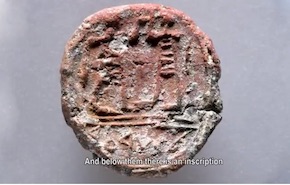 2018-01-11
2018-01-11Seal impression found in Jerusalem
Governor of the City's seal impression (7th-6th century BCE) unearthed for the first time in situ in Jerusalem. The "governor of the city" is mentioned twice in the Hebrew Bible (2 Kings 23:7; 2 Chronicles 34:8).
https://www.youtube.com/watch?v=XGD5sf885yw
(D.Tripaldi)
